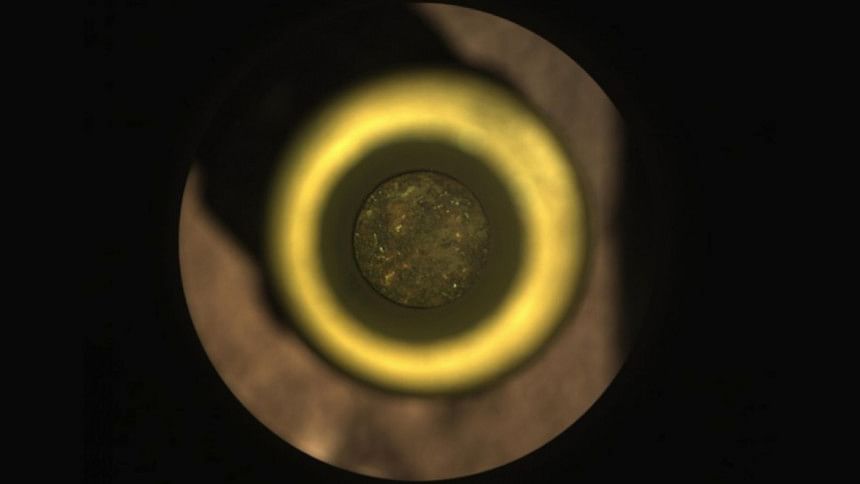Mars rocks collected by Perseverance boost case for ancient life

Both samples, slightly wider than a pencil in diameter and about six centimeters long, are now stored in sealed tubes in the rover's interior.
A first attempt at collecting a sample in early August failed after the rock proved too crumbly to withstand Perseverance's drill.
The rover has been operating in a region known as the Jezero Crater, just north of the equator and home to a lake 3.5 billion years ago, when conditions on Mars were much warmer and wetter than today.
The rock that provided the first samples was found to be basaltic in composition and likely the product of lava flows.
Volcanic rocks contain crystalline minerals that are helpful in radiometric dating.
This in turn could help scientists build up a picture of the area's geological history, such as when the crater formed, when the lake appeared and disappeared, and how climate changed over time.
"An interesting thing about these rocks as well is that they show signs for sustained interaction with groundwater," NASA geologist Katie Stack Morgan told a press conference.
The scientists already knew the crater was home to a lake, but couldn't rule out the possibility that it had been a "flash in the pan" with floodwaters filling up the crater for as little as 50 years.
Now they are more certain groundwater was present for much longer.
"If these rocks experienced water for long periods of time, there may be habitable niches within these rocks that could have supported ancient microbial life," added Stack Morgan.
The salt minerals in the rock cores may have trapped tiny bubbles of ancient Martian water.
"Salts are great minerals for preserving signs of ancient life here on Earth, and we expect the same may be true for rocks on Mars," added Stack Morgan.
NASA is hoping to return the samples to Earth for in depth lab analysis in a joint mission with the European Space Agency sometime in the 2030s.

 For all latest news, follow The Daily Star's Google News channel.
For all latest news, follow The Daily Star's Google News channel. 



Comments